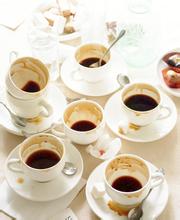Introduction to the flavor and taste characteristics of sweet and light Colombian coffee manor
Roasted coffee beans will release a sweet aroma, with sweet in the acid, bitter in the flat quality characteristics, because of the appropriate concentration, it is often used in high-grade mixed coffee. Colombian coffee exudes a light and elegant aroma, not as strong as Brazilian coffee, not as sour as African coffee, but a sweet fragrance, low-key and elegant.
Its unique geographical environment has created the quality of coffee, Colombia, beautiful mountains and rivers, beautiful scenery, pleasant climate, spring all year round, fresh air, refreshing. Colombia's mild climate, humid air, and diverse climate make it a harvest season all year round, with different kinds of coffee ripening at different times. What they grow is Arabica coffee beans of unique quality, and the coffee made from this coffee bean has a rich taste and endless aftertaste, which can be called fine coffee.
Nowadays, many people equate "Colombian coffee" with "high quality" and "good taste". The following is a selection of boutique coffee from Colombia, raw beans from Colombia, which is one of the few individual coffees sold in the world under the name of the country. In terms of quality, it has won praise unmatched by other coffee. Compared with other producing countries, Colombia is more concerned with developing products and promoting production. It is this, coupled with its superior geographical and climatic conditions, that makes Colombian coffee excellent in quality and delicious. Columbia Coffee (Cafe de Colombia) is one of the few individual coffees sold under the name of the country in the world, and it is also a successful example of the successful combination of geographical indications and brand image.
In December 2004, the Colombian Coffee producers Association (FNC) applied to the Government of Colombia for registration of the geographical indication "Caf é de Colombia" (Colombian Coffee). Three months later, the Colombian government approved "Caf é de Colombia" as "appellation of origin-geographical indication (D.O.-G.I.)". As a result, this logo has also become the official symbol of the Colombian Coffee producers Association. The National Coffee producers Association of Colombia (FNC) is acutely aware of the importance of naming of origin and geographical indications (D.O.-G.I.). Naming of origin (Denominaci ó n de Origen) is a system of protection of appellations of origin, which is mainly used to protect the quality and credibility of agricultural products. This law ensures that only food actually produced in a certain region can be marketed in the name of the region, in order to protect the reputation of the food producing area, eliminate unfair competition and avoid consumers from buying food from non-real producing areas, not only that, but also won praise for the quality that other coffee can't match. Compared with other producing countries, Colombia is more concerned with developing products and promoting production. Colombian boutique coffee beans account for 30% of the country. Any kind of coffee that is difficult to take care of will be at ease in the Colombian promised land. Due to the fertile soil, large temperature difference between day and night, and superior geographical and climatic conditions, Colombia developed a multi-generation backcross improved variety of Kativen in 1980, which was honorably given the national name and formed a double main variety with Kaddura.
(botanists' study of coffee varieties)
(hybrid Coffee Coffee)
Colombia used to be dominated by commercial beans. In 1990-2000, boutique beans accounted for only 5% of the country's coffee production. after the millennium, FNC explored the business opportunities and potential of boutique coffee and strongly instructed coffee farmers to switch to the more profitable boutique coffee bean planting industry. At present, FNC certified boutique coffee accounts for 30% of the country's total coffee output, which shows the authorities' ambition to promote boutique beans.

Important Notice :
前街咖啡 FrontStreet Coffee has moved to new addredd:
FrontStreet Coffee Address: 315,Donghua East Road,GuangZhou
Tel:020 38364473
- Prev

Introduction to the flavor and taste characteristics of Rwanda coffee manor with rich fruit flavor
The watershed between the Congo basin and the Nile basin runs through Rwanda from north to south, with about 80 per cent of the country draining from the Nile and about 20 per cent from the Ruzi River and Lake Tanganyika. The longest river in the country is the Niabalongo River (Nyabarongo River) in the southwest, which turns north, east and southeast and flows into the Luwuwu River to form the Kagaila River.
- Next

Sumatra Lindong Coffee with Maple syrup Sweet Flavor and Taste Variety introduction
From the famous Costa Rican coffee estate-La Minita (Raminita) to Sumatra technical guidance, from planting to processing, and with the most stringent quality management capabilities of La Minita. The producing area is mainly located in the east of the forest, but the flavor is very different from the general Mantenin, with clean and charming peach and apricot fragrance.
Related
- Detailed explanation of Jadeite planting Land in Panamanian Jadeite Manor introduction to the grading system of Jadeite competitive bidding, Red bid, Green bid and Rose Summer
- Story of Coffee planting in Brenka region of Costa Rica Stonehenge Manor anaerobic heavy honey treatment of flavor mouth
- What's on the barrel of Blue Mountain Coffee beans?
- Can American coffee also pull flowers? How to use hot American style to pull out a good-looking pattern?
- Can you make a cold extract with coffee beans? What is the right proportion for cold-extracted coffee formula?
- Indonesian PWN Gold Mandrine Coffee Origin Features Flavor How to Chong? Mandolin coffee is American.
- A brief introduction to the flavor characteristics of Brazilian yellow bourbon coffee beans
- What is the effect of different water quality on the flavor of cold-extracted coffee? What kind of water is best for brewing coffee?
- Why do you think of Rose Summer whenever you mention Panamanian coffee?
- Introduction to the characteristics of authentic blue mountain coffee bean producing areas? What is the CIB Coffee Authority in Jamaica?

